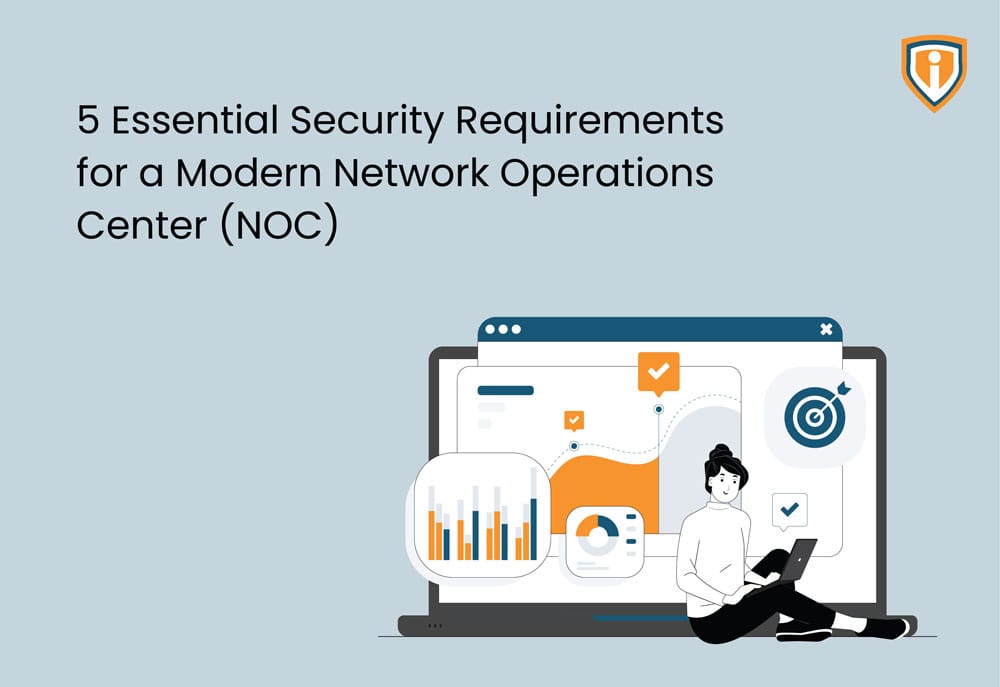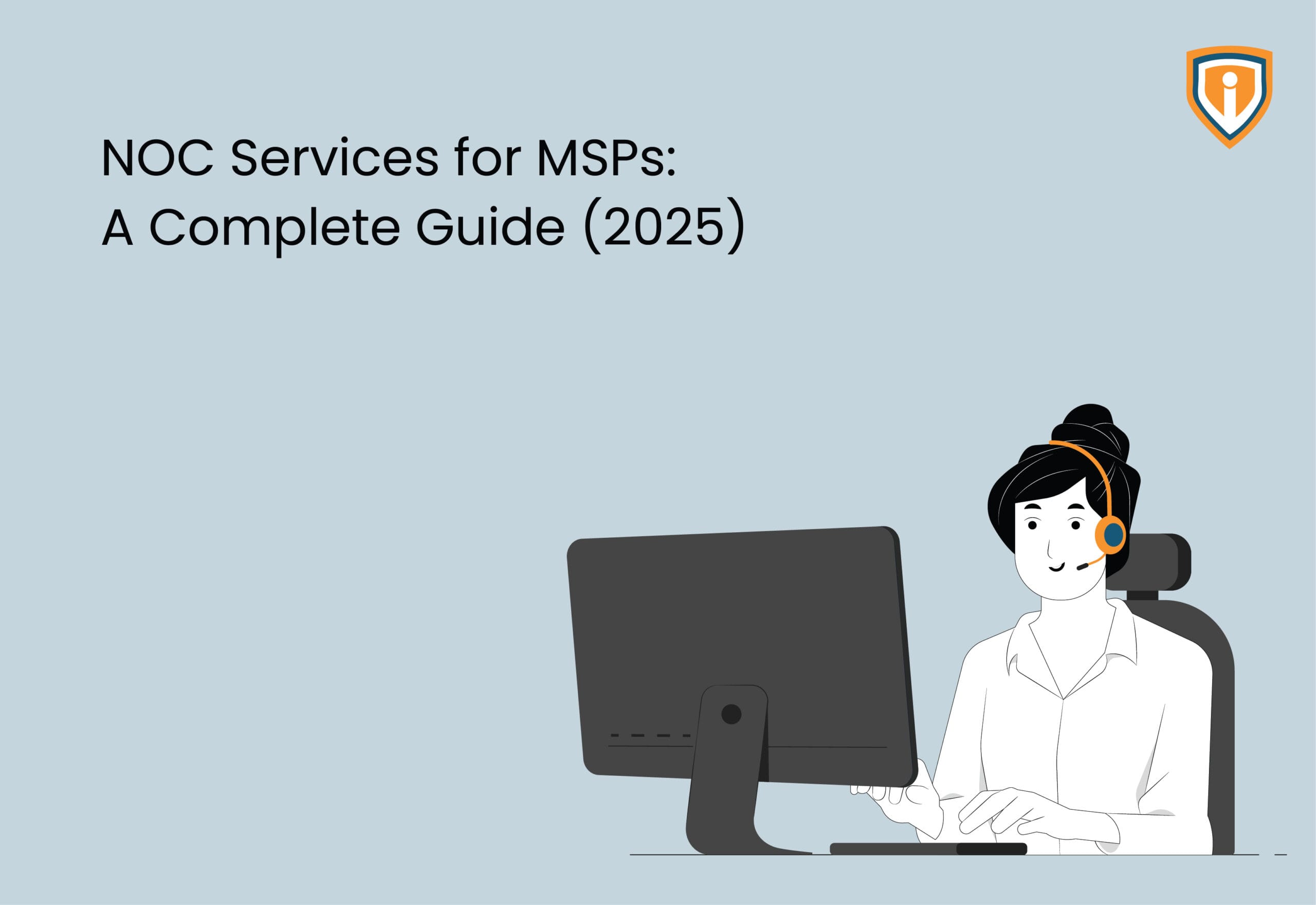Modern-day businesses inhibit cutting-edge IT technologies to compete with their competitors and cater to their customers’ needs promptly. The inclusion of advanced IT technologies requires businesses to invest in proper network security and network management systems. The tracking and management of advanced IT systems become possible by building a modern Network Operation Center (NOC) support team.
In layperson’s terms, an NOC network is a network hub or network management system that enables IT enterprises to avoid downtime and ensure network availability 24/7. Due to this, the business realizes its true purpose of catering to its customer’s needs efficiently without any delay. A proper network security system not only prevents downtime but also protects the network from any malicious network security threats.
Suppose you want your business to stay ahead in the game and face next-to-none network security and monitoring issues. In that case, you must possess these 5 Essential Security Requirements for a Modern Network Operation Center (NOC).
Why Must You Up Your NOC Game?
No matter how good your NOC technology is, you must understand that the most significant part of a good NOC network is its security patches and certifications. The highly secured network certifications ensure that your enterprises are fully protected from any threats. That’s why incorporating modern network security requirements is a must for your business to enforce a high level of trust among end users and customers.
Incorporate These 5 Essential Security Requirements for Modern NOC
Role-Based Access Control (RBAC)
It’s a no-brainer that a good network security system should have an efficient access control system. That’s where Role-Based Access Control (RBAC) comes in to ensure that network access is given based on an individual’s role in an organization. In simpler terms, RBAC ensures that not everyone can access everything on a given network.
In a Role-Based Access Control (RBAC) System, employees can only fetch information from the network security system that they are allowed to. RBAC assigns roles to different employees, which act as the level of access they get to the network. These roles ensure that certain employees can retrieve only certain types of information from the system to do their day-to-day tasks efficiently and also restrict unassigned access to the system.
Moreover, access is given based on Key Responsibilities Areas (KRA) and the authority of an employee in the underlying network security system. It also restricts employees to certain tasks like viewing, editing, and creating or modifying files in the computing system.
Incorporating Role-based Access Control (RBAC) in your network security system allows you to prevent sensitive data theft and network security threats.
Network Segmentation
Network management can be complex as it comprises several processes for network security and NOC monitoring. That’s why you need to segment such complex NOC networks into multiple networks.
The process of breaking down a network into multiple sub-networks is called Network Segmentation. In Network Segmentation, each subnet acts as a miniature network. It’s an important part of the NOC network as it allows the NOC support admin to manipulate the traffic between multiple sub-networks, which is based on underlying policies.
If you allow network segmentation in your network security system, your network will be more stable with enhanced security and performance. Moreover, your NOC support team can easily diagnose and restrict any network threats to sub-nets, as Network Segmentation restricts the intensity of cyber attacks on the main network.
Logging (SIEM)
In network monitoring, logging is a process of journaling every access attempt and task done within the system and storing it for NOC monitoring. Furthermore, Log Files comprise critical information that may help ensure the safety of the NOC system. It also helps in finding out the unwanted intruders and activities in case of any network security threat.
SIEM (Security Information and Event Management) is a type of application that stores and shows the traffic that may enter the network security system and records all the log events. With SIEM, your network admin and NOC support staff can easily monitor the log events using advanced dashboards, graphs, and data.
Moreover, SIEM has become one of the most sought-after tools in IT as it enables the NOC system to monitor activities and log events 24/7 against any network security threats.
Intrusion Detection and Prevention
Intrusion Detection and Prevention can be understood as a system that monitors your network security system and diagnoses it continuously against any kind of possible threats. Once a threat is diagnosed, IDPs (Intrusion Detection and Prevention) send a threat alert to the network administrator and NOC support team.
In modern businesses, cutting IDPs is a must for any organization. Once you implement these systems in your network security system, you can count on them as it acts as a virtual ‘watchman’ of your NOC system. It also prevents any irregular behaviour or potential network security threats. You can also get your network administrators and NOC support team to configure the IDPs in such a way that they can take preventive actions on their own.
Routine Security and Vulnerability Assessments
Last but one of the most important tips for having a robust NOC system/network system is to ensure that your network monitoring system is thoroughly checked every week, as any network monitoring system can function at its full capacity when you do the weekly vulnerability assessments of your system. If any vulnerability is found, contact the hardware/software engineer and get it fixed ASAP.
You can also ask a third-party NOC support team to hack it to audit the security of your NOC system.
Conclusion
As a business owner, one is always supposed to be concerned about their network security system. With the right tools and techniques, you can be relaxed and focus on other aspects of your business. Ensuring that your NOC system comprises all the abovementioned security requirements, like RBAC, Network Segmentation, IDPs, etc., not only helps you keep your system up and running but also diminishes the chance of any network security threats.
That being said, you should also invest in developing an experienced and skilled NOC support team to ensure that they can diagnose and eliminate any network security threats if anything arises. This write-up gives you some perspective on how to keep your NOC system robust and modern with 24×7 NOC monitoring.





